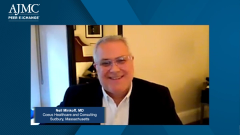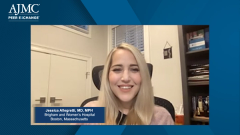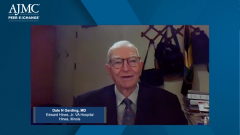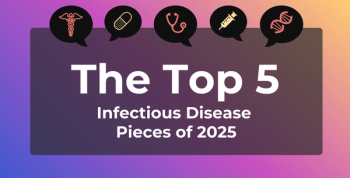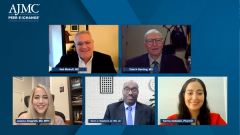
Challenges in the Management of C. Diff Infection
Panelists take a step back to consider the broader challenges in managing patients with clostridium difficile infection.
Episodes in this series

Transcript:
Neil Minkoff, MD: I have a naïve question that goes back longer than I care to say, back to when I was still in-house staff and then as a PCP [primary care provider] and an ED [emergency department] doctor. Why is treating Clostridioides difficile [C diff] so difficult? It seems to be a particularly difficult infection to manage and treat, with a high rate of recurrence. I want to open it up to Drs Gerding and Allegretti to try to enlighten this former staff person why this seems more complicated than a lot of other infections we treat. What are you doing to try to cut that off at the pass for the first infection?
Dale N. Gerding, MD: When C diff was first identified and the treatment was considered to be accomplished, it was identified as a pathogen cause of pseudomembranous colitis. Vancomycin was identified as a treatment agent almost immediately. The issue of recurrence was just considered a nuisance. This persisted through the 1980s and ’90s. At one time, we even banned the use of oral vancomycin in the hospital via CDC [Centers for Disease Control and Prevention] because of the risk of vancomycin-resistant enterococci in the hospital. Metronidazole became the preferred treatment.
Around the year 2000, we began to see new strains of C diff causing infections that were much more rapid and severe, with much higher rates of recurrence. That triggered the concern for these patients who were probably neglected in the past. But the evolution of this strain 027, or NAP1 or BI strain, have clearly increased the concern and cause much higher mortality and morbidity in patients. The problem of recurrence is the key issue. We’re getting antibiotic response rates of 90% for the acute treatment, but we’re not getting resolution of this recurrence problem. That’s an issue that doesn’t occur with most infections. We simply haven’t had these kinds of recurrences.
We treat the patient and symptoms resolve, but probably two-thirds are still carrying C diff in the stool after treatment. Those patients can acquire another antibiotic. They can see the C diff proliferate if they had further damage to their microbiota. As a result, these patients remain at risk, sometimes for as long as 6 months. The key issue is that we haven’t been able to eradicate the pathogen in the patient, even though we can eradicate the symptoms with antibody treatment. That’s where we need to be going. We need to figure out how to supplement a normal microbiota to reestablish colonization resistance, or we need to figure out how to get rid of that organism in the stool so we don’t have all these recurrent episodes of C diff.
Jessica Allegretti, MD, MPH: I agree. We know that about 80% of patients will do very well with a single course of antibiotics. It’s the 20% or so who go on to recur who we still don’t fully understand. We know that it has something to do with an impaired host response. It’s been shown that low levels of both IgG [immunoglobulin G] and IgM [immunoglobulin M] to toxin result in higher rates of recurrence. That’s why you’ve seen vaccines in development, although we don’t have 1. Because as you know from what’s going on in the country, vaccine development is hard and hard to enroll in.
Those things are being explored because the host response is very important in clearing this infection. But the microbiome—specifically with regard to C diff—has also come to the forefront as a critical metric in clearing this and reestablishing colonization resistance. Because it’s a spore-forming agent, those spores are very resistant. They’re around. If you don’t decontaminate your home properly, you’re coming home and swallowing huge amounts of spores every day, and you now have this very vulnerable microbiome. That’s why microbiome therapeutics have been so successful in this space.
We’ve shown that after FMT [fecal microbiota transplantation], your likelihood of being completely decolonized from C diff is very high. To Dr Gerding’s point, after a course of antibiotics, this organism is still around. Vancomycin and metronidazole are bacteriostatic. The bug is around. The difference with a microbiome therapeutic is that you may be able to fully decolonize patients, not only treating them but preventing subsequent recurrences.
Transcript edited for clarity.
Newsletter
Stay ahead of policy, cost, and value—subscribe to AJMC for expert insights at the intersection of clinical care and health economics.

